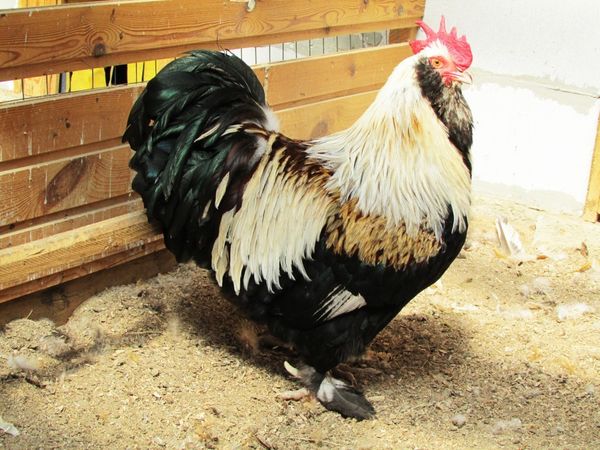In the XVIII century in France, in the town of Fireol, a breed of chickens was bred whose meat was intended for the preparation of delicious broths. Three hundred years of breeding added chickens external charm and egg production.
In a number of countries, faeries are bred exclusively for exhibitions. But beauty is not their main advantage.
Table of contents
Exterior breed: how to distinguish chickens, roosters and chickens
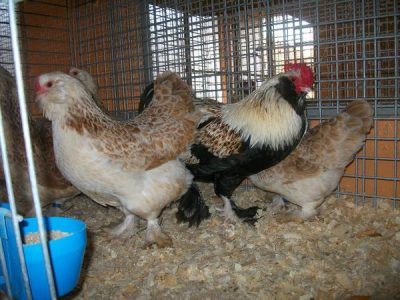 Fireball is derived on the basis of breeds Gudan, Brahma, Cochinquin and Silver Dorking.
Fireball is derived on the basis of breeds Gudan, Brahma, Cochinquin and Silver Dorking.
On the left in the photo you can see the rooster and chicken fireball.
In the poultry yard, chickens stand out for their harmonious constitution, characteristic plumage, five-fingered paws.
Description of breed of chicken fireball:
- Head slightly flattened flatsmall
- Beak powerfulShort, white, light yellow or pink color.
- Comb simple type medium. Erect, leafy, low. High teeth evenly cut.
- Neck tightMedium length with a lush mane that goes over to the back. The faeroleum is distinguished by a characteristic neck collar, some feathers are oriented horizontally, others look up towards the back of the head.
- Eyes red-orange, medium size.
- The face is pubescent, red. Red lobes are supported by tanks, a beard, located under the beak. Earrings underdeveloped.
- Body slightly elongated, trapezoidal, set horizontally, with a massive chest and well-developed muscles. The back is rather long. Turns into a strong, dense loin with a rich top cover.
- Belly faberoles deep.Chickens are more squat, heavy constitution.
- Tail raised. Steering feathers are short. Roosters have short curved braids. Chickens have a roof-like tail shape.
- Wings snug fit, high up on the torso.
- Legs with magnificently feathered short shins without a “hawkish” shred, well developed. Hocks are white, medium length. The distinctive feature of the chicken faerol breed - the fifth fingerwhich is located above the rear finger, with a clearly separated long claw pointing upwards. The fourth finger is placed horizontally.
- Plumage friable, fluffy, soft. Abundant plumage helps the fireballs in the winter season. Small feather pillows are noticeable.
- Skeleton thin. The skin of all varieties of faeries is creamy white.
- Chicks hatch with yellow, yellowish-white fluff. To know how to distinguish the sex of chickens, you must wait. Gender Differences appear two months after birth, tanks and a beard form at males, feathers at the ends of males wings are darker than at chickens.
- Coloring varied. Traditional are salmon and Colombian (silver) color.
Species: salmon, blue, colombian
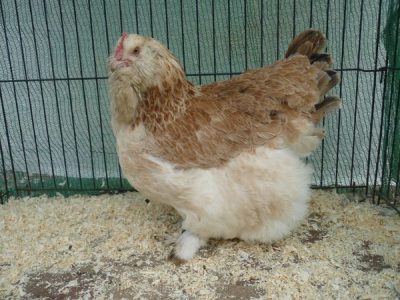 Chicken and roosters are slightly different in the breed of chicken salmon faverol (lahshuner). In females, the feathers are salmon, pink-red in color with a white border, and a lighter shade on the belly and chest.
Chicken and roosters are slightly different in the breed of chicken salmon faverol (lahshuner). In females, the feathers are salmon, pink-red in color with a white border, and a lighter shade on the belly and chest.
The core of the pen is white. Tail, neck dark brown, with a reddish tinge. Legs, belly, breast milk. On the right you can see photos of this breed.
Roosters have tail, chest, belly, buck and beard, legs, tarsus — black, brown-red, interspersed with yellow and white. Ivory feathers on the back. On white neck collar and wing feathers there is a black-green or brown-copper strip with a mirror shine.
For breeding is not recommended:
- Roosters without red plumage on feathers of the first order and back, colored spots on the neck, excessive variegation of the abdomen, beard, blotches of white on the abdomen and chest.
- Chickens are not salmon-colored, with black feathers in the beard, with a white feather core.
Standards secured birds with blue, blue and salmon, white, ermine, fawn, black, light birch (berken), splash, red-white, striped plumage.
Colombian (silver) fireball silver-white on the main color. Chickens and roosters are identical in color.
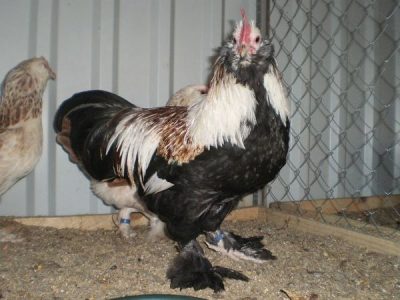 On the mane and tail along the feather bar there are blue-black stripes with green tint. The outline of the pen is clearly delineated by a white border. According to the standard, the tail feathers of females and large males of males can have the same border.
On the mane and tail along the feather bar there are blue-black stripes with green tint. The outline of the pen is clearly delineated by a white border. According to the standard, the tail feathers of females and large males of males can have the same border.
On the wings, the feathers are black with white edging; on the folded wings, the black color is not noticeable. Feathers of the second order and white fluff, without inclusions.
Rejected:
- Birds with gray pattern.
- Birds with a solid black color feather on mane, yellow feathers.
Whites — pure white coloring of hens and roosters.
Blue faberol - determining the color of the plumage of blue of different intensity. The outline of the pen is delineated.
Signs of imperfection
- Does not pass the standardization of the bird with underdeveloped muscles. A short, squat or too high, untrapied body, a curved or convex back, a sharp narrow stiff (back of the body).
- Individuals are withdrawn from the herd fifth finger, with blue, yellow metatarsus, irregular position in relation to each other of the fourth and fifth fingers, a yellow beak, overly prominent cushions in the area of the nakhhvostiya, a large crest, a long tail.
- Not allowed short and narrow neck, low-feathered tanks and beard, the presence of "hawk shred" cuffs on the plusus, the lack of hair in chickens.
Description of production characteristics
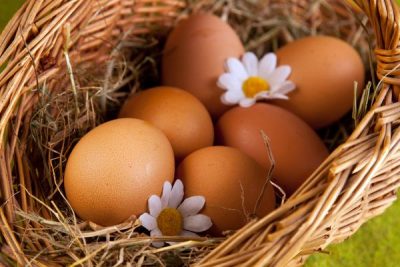 Fireballs belong to the general user, with a bias towards the meat direction, early-breed.
Fireballs belong to the general user, with a bias towards the meat direction, early-breed.
From two months chickens quickly gain weight, suitable for slaughter by 4-4.5 months. The weight of the cocks 3-4 kg, chickens - 2.5-3.5 kg.
White, tender meat is valued for its small fiber, juiciness. Gourmets prefer fragrant poultry meat of pasture content. Its taste is similar to pheasant.
Thin skin is easily plucked, no need to scorch the carcass. The bones are thin, light.
Egg production is average. In the first year of egg production - 160-180 units per year, in the second - 130.
A mass of eggs is 55-60 g. Usually a hen brings two eggs in three days. Strong shell of yellow, brown, pink color.
The fireballs begin to reach the age of six months with the length of daylight at least 13 hours. Good rush in the winter.
Temperament
Character trustful, open. Quickly tamed, find out the owner. Calm, phlegmatic, prone to contemplation. Long stay in one place, watching others.
They have a good appetite, so they are prone to obesity. People who live with their neighbors on the sidewalk, balanced.
Conditions of detention
Chickens fireball badly tolerate cells and aviaries. Easily getting fat birds need conditions for the manifestation of physical activity.
Walking
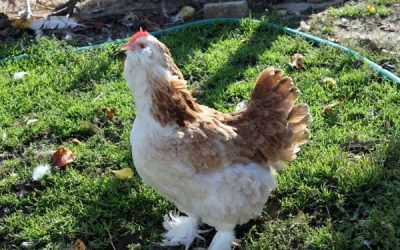
Free-range chickens are less likely to get sick, they are distinguished by a large percentage of egg fertility, as they have the ability to obtain trace elements, vitamins, and minerals from pasture.
Housewives appreciate the market for delicacy, when searching for insects, they do not tear beds and flower beds.
Do not like to fly. High fencing paddock is not necessary.
Chicken coop
Fireworks lodge in a spacious chicken coop.In the chicken coop make a dry litter, monitor the humidity of the air. Chickens do not tolerate high humidity.
Do not allow crowding. With a large number of birds in a small space there is a danger of disease. Feed consumption increases, chickens trample it.
Feeders are hung or crossbars are made in troughs for feeding, so that chickens do not scatter feed.
In order to avoid fractures when falling from a height, they make round wide perches with a ladder for lifting.
Breeding chickens of this breed
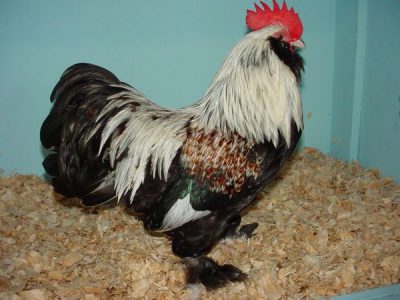 Pure breed chickens are rare. The German and Hungarian breeding materials have proven themselves well. There are several domestic breeding lines.
Pure breed chickens are rare. The German and Hungarian breeding materials have proven themselves well. There are several domestic breeding lines.
The cost of weekly chicks from 300 rubles, two weeks from 350 rubles, eggs incubating from 600 rubles, half a year old birds from 5000 rubles.
The optimal time for breeding chickens is February. In the spring, chicks can already be released for walking, and in the summer the chickens will start to nest.
In order to avoid closely related crossbreeding, which leads to the degeneration of the breed, the appearance of defects and deformities in chickens, a decrease in productivity, they contain at least 5-6 chickens and a rooster of another line. However, it is not recommended to contain more than 10-15 heads.
- Eggs for breeding chicks are taken from chickens over one year oldStore at a temperature not exceeding + 10 ° C for no more than two weeks.
- Chickens are more often brought in an incubator. Chickens are not very good hens.
- The temperature in the incubator is kept exactly in + 37.6 ° C. A drop of even 1/10 of a degree results in twisted fingers and toes.
- Hatching goes together on day 22. Newborns are immediately planted on warm, dry bedding, keep the room temperature + 38 °.
- During the period of short daylight spend dosvechivanieespecially in cloudy, dark weather.
Feeding up
Adult birds
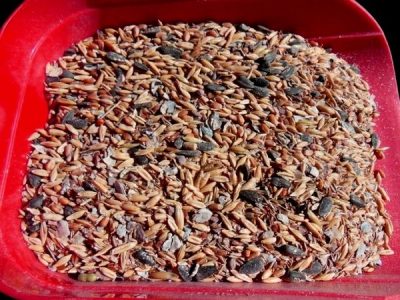 A balanced diet is required. Preference is given to dry feed, feed.
A balanced diet is required. Preference is given to dry feed, feed.
Wet mash bags stain magnificent plumage of birds. Pecking out the stuck leftover hens cause each other injuries, get an untidy look.
In the summer, 1/3 of daily consumption is green mass, pasture. Of grasses, legumes, and grains, nettle, meadow clover, wood lice, dandelions, purslane, pig, alfalfa, peas, oats, and wheat are considered the most suitable.
After walking the bird is fed with grain, mixed fodder.
The daily allowance of feed, grains (corn, wheat, oats) per head is 150-155 g. At the onset of obesity they put on a diet, reducing the issue of feed to 80 g.
In winter and springtime, green mass is replaced by germinated wheat grains, pumpkin pulp, zucchini, carrots, steamed nettle, dried beetroot and carrot tops, spruce, pine, and fir needles.
Required vitamin supplements. When eggs are low, oatmeal is added to the diet. In winter, wet food is heated.
With a combined diet feed set 3-4 times a day, alternating dry and wet mixtures.
Chickens: description, photo, video
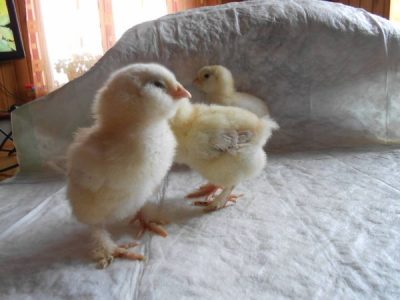 After hatching, the chickens are fed chopped boiled eggs, cottage cheese, and corn porridge.
After hatching, the chickens are fed chopped boiled eggs, cottage cheese, and corn porridge.
On day 11, they begin to give full-fledged chicken feed.
Feeding scheme:
- 1-30 days 6-8 times, at regular intervals,
- 30-60 day -- 4 times,
- after 60 days - 3 times a day.
Diseases
Chickens are resistant to diseases, unpretentious. The main danger lies in the high humidity of the chicken coop, bedding.If the optimal maintenance regime is not observed, the bird becomes sick and dies.
Features and advantages of the breed
Differ in endurance, resistant to harsh climatic conditions. Quickly reach food maturity and egg production.
With good production characteristics have a beautiful view. Specific features - five-fingered, characteristic tanks, beard, cervical collar.
Among the disadvantages of poultry farmers noted a tendency to obesity., difficulties in acquiring and maintaining the purity of the breed.
Reviews of breed of chicken fireball
We offer you a few reviews about this breed:
Firewalls ... my dream ... Just in our climate, and foragers are excellent, and myasko, and beauties. They are all good.
I admire not only the beautiful flower garden of fireworks in my chicken coop, I also admire their meat in the kitchen and on the table. The meat of a 6-month-old rooster is fried as fast as the meat of a young broiler. Gentle, juicy, and the taste of meat market favorites doesn’t have any competitors.
I am engaged in the breed krill. My weight in six months is from 3.200 to 3.800, the weight of the gutted carcass is 2.200-2.600, the weight starts to gain good after 2 months, I would say that they shoot, by 4-4.5 months the carcass looks decent, round and appetizing. With age, the meat does not become tougher and rougher.It is very convenient for me that the time of slaughter is stretched indefinitely, always the freshest, tender meat.
And one more thing, maybe even ridiculous. Their carcasses are not hairy, singe is more for pro forma, Zagorskaya salmon compared to the fireball after plucking is just a curly punk. The skin of the hen's firewall is thinner and whiter than that of other breeds. And the carcass looks very attractive - pale pink. For us, a favorite, like meat, is an undisputed favorite.
Initially bred as a meat table breed of chickens, a fireball, thanks to many years of breeding, acquired high egg production and decorativeness.
Despite the difficulties with the acquisition of rock material and its high cost, the hen breed faerol occupy more and more places in the poultry houses of amateurs and farmers.
You can watch an interesting video about this breed:
